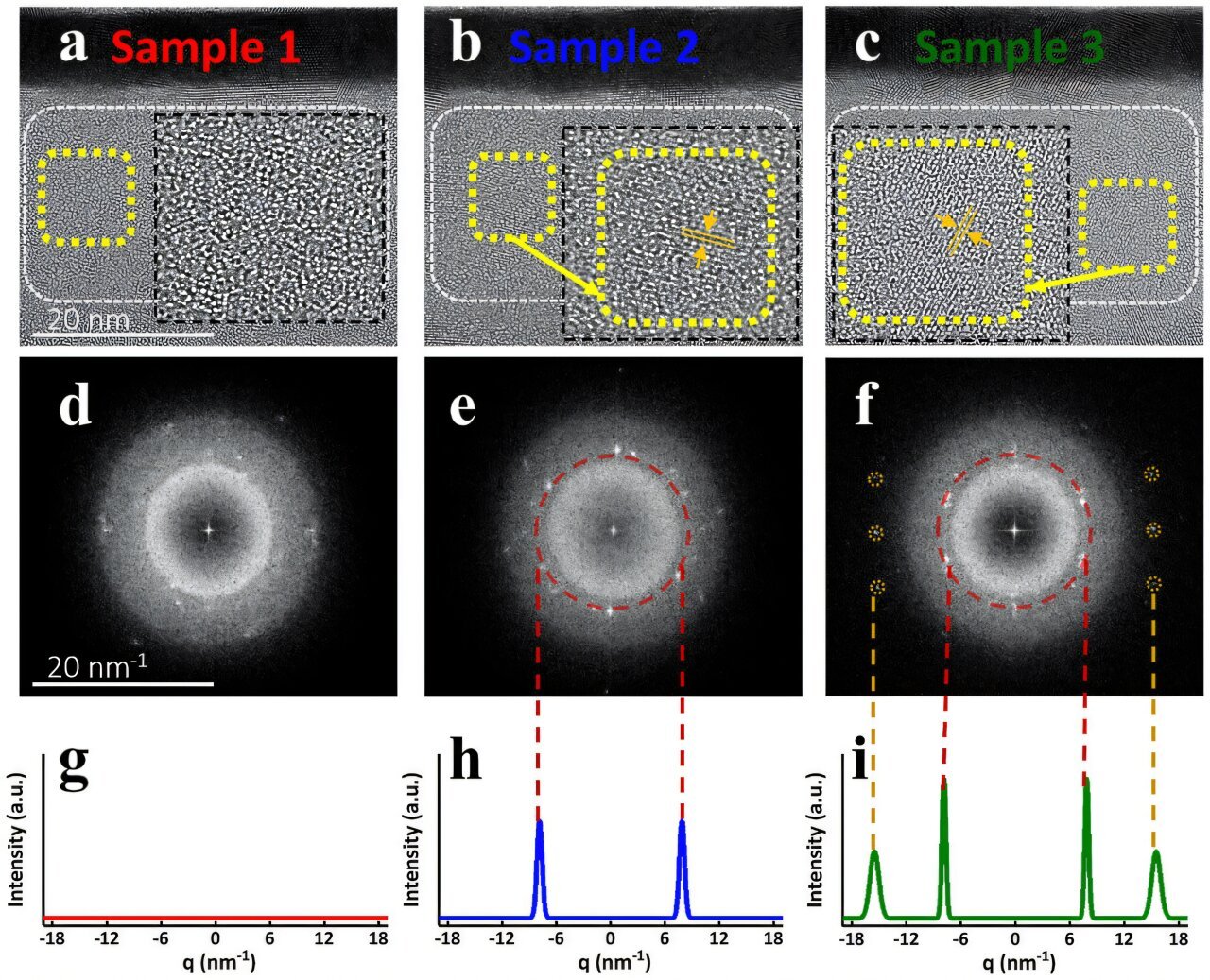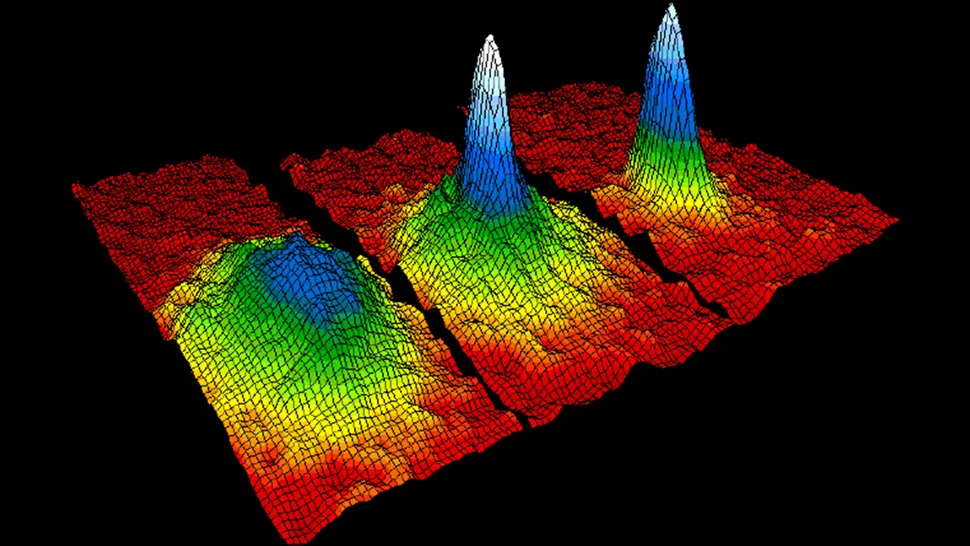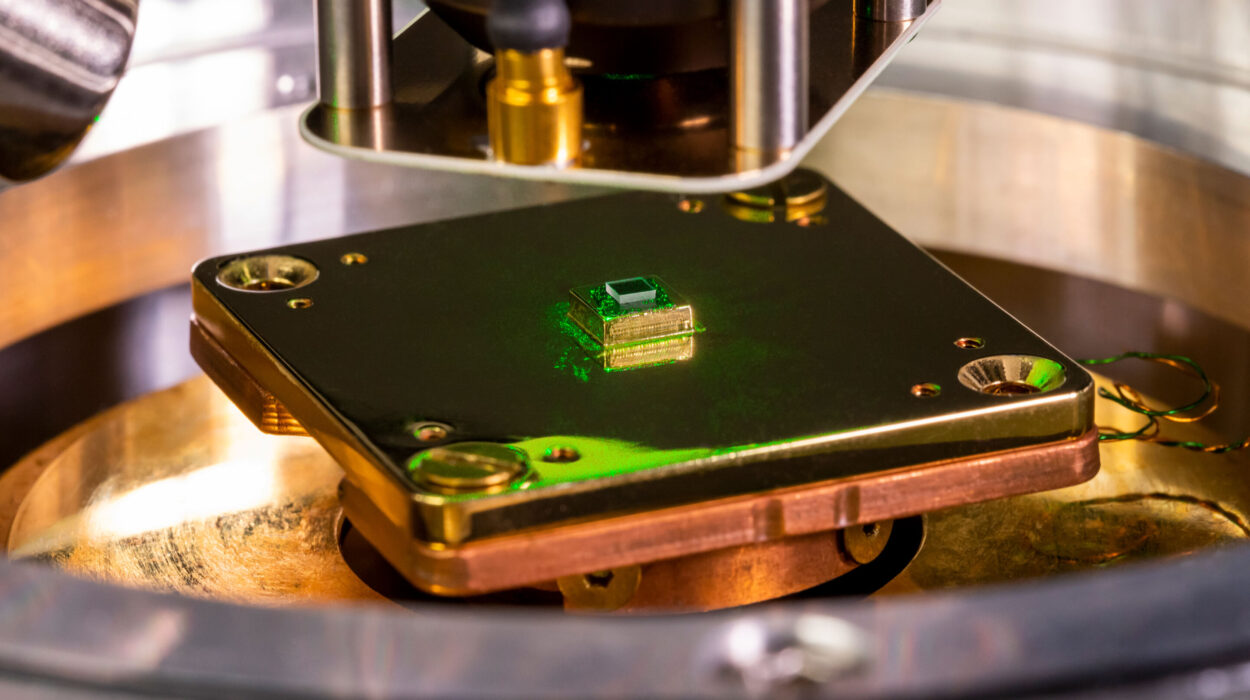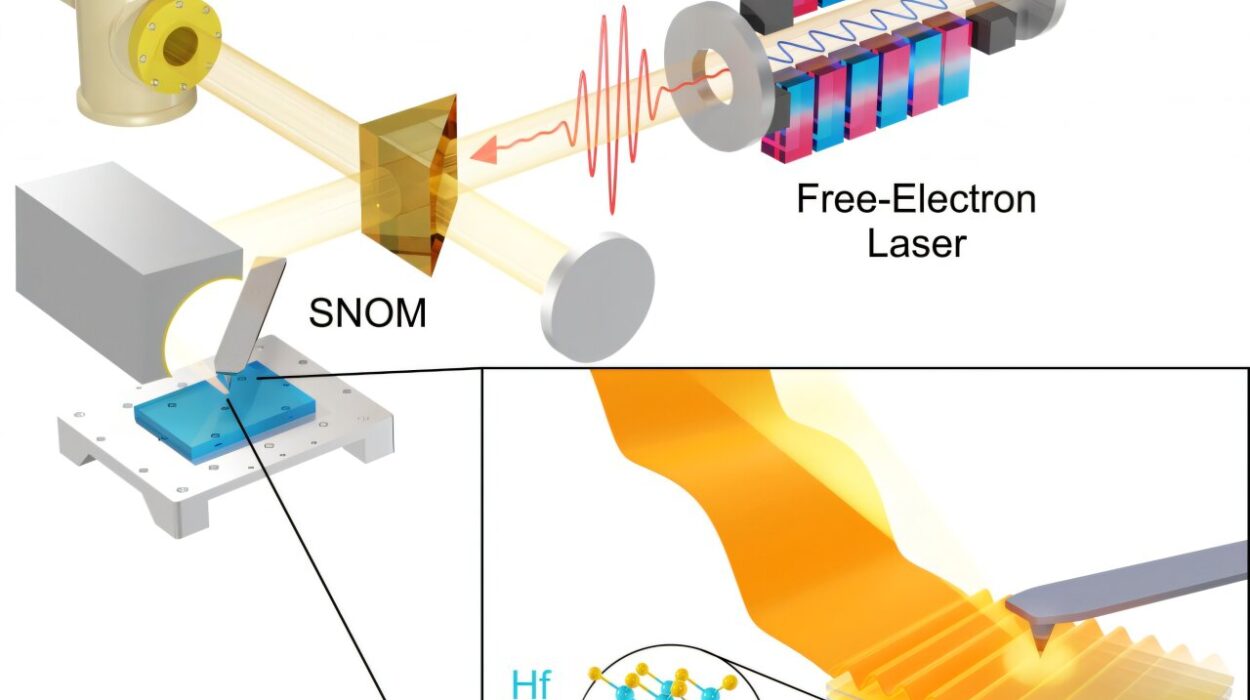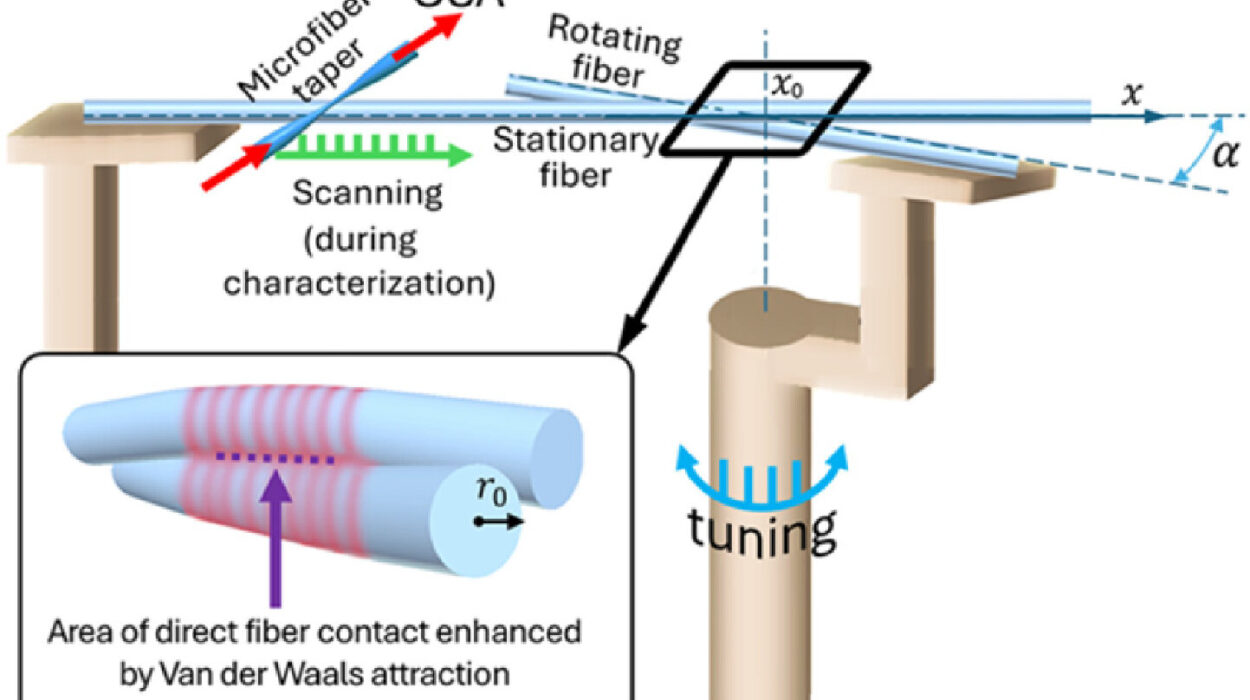In a groundbreaking leap for material science, a team of researchers has uncovered a remarkable and unexpected behavior in a compound long studied for its electrical personality—but rarely its magnetic one. The substance in question is vanadium oxide (VO), a compound well-known in physics for its enigmatic ability to switch from a metal to an insulator depending on temperature. Until now, magnetism was not part of its resume. But in a discovery that challenges decades of assumptions, scientists have succeeded in inducing ferromagnetism—the very essence of magnetic behavior—in pure vanadium oxide, without doping or structural tampering.
This revelation, published in Advanced Functional Materials, was led by Professor Chun-Yeol You from the Department of Physics and Chemistry at Daegu Gyeongbuk Institute of Science and Technology (DGIST) in South Korea. Their work reshapes the magnetic map of materials science and opens a new frontier in the development of next-generation magnetic devices.
The Curious Case of Vanadium Oxide
Vanadium oxide has long held a reputation as an electrical chameleon. Its ability to undergo a metal-insulator transition (MIT)—a radical transformation in electrical conductivity—makes it a subject of intense study in electronic and energy research. At certain temperatures, VO can flip from conducting electricity like a metal to acting like an insulating barrier. This quality has given it a place of honor in fields ranging from smart windows to neuromorphic computing.
But magnetism? That’s a different story.
Traditionally, VO has been typecast as a paramagnetic or antiferromagnetic material—states in which magnetic moments either don’t align (paramagnetic) or align in canceling patterns (antiferromagnetic). Ferromagnetism, the hallmark of materials like iron and cobalt, where atomic magnetic moments march in unison, was simply not expected in vanadium oxide. Its electron configuration and crystal symmetry appeared to prohibit such behavior.
Until now.
Ferromagnetism Without Doping: A Radical New Approach
The key breakthrough came not through doping—adding impurities to a material—or inducing defects, as is commonly done to tweak magnetic behavior. Instead, the team pursued an elegant and minimalistic strategy: precisely tuning the oxidation state of vanadium ions in thin films of vanadium oxide.
Vanadium is a transition metal capable of adopting multiple oxidation states, ranging from +2 to +5. Each state subtly alters the number of electrons orbiting the vanadium atoms and, crucially, changes how these electrons interact with each other and with neighboring atoms.
By depositing ultra-thin layers of vanadium onto a substrate and carefully introducing controlled amounts of oxygen, the team created films of vanadium oxide with different oxidation levels. These variations effectively rewired the internal electronic landscape of the material—without the need to add anything foreign.
The results were astonishing.
Mixed Valence: The Secret Ingredient for Magnetism
As the researchers varied the oxidation level, a fascinating trend emerged. Lower oxidation states, such as Vanadium (III), began to exhibit signs of ferromagnetic ordering—the same type of magnetic alignment found in traditional magnets. Conversely, higher oxidation states leaned back toward nonmagnetic behavior.
But the real magic happened when multiple oxidation states coexisted. In particular, samples that contained both Vanadium (III) and Vanadium (IV) ions showed clear and robust ferromagnetic behavior. This phenomenon, known as mixed valence, created pockets of magnetic activity within the material that were strong enough to be measured and validated both experimentally and theoretically.
This coexistence appears to facilitate exchange interactions—the fundamental quantum mechanical mechanisms that lead to magnetism—between electrons on neighboring atoms. In simpler terms, the presence of differently charged vanadium ions in close proximity seemed to encourage the magnetic moments of their electrons to align in a common direction.
These localized magnetic regions were not random flukes. They lined up remarkably well with Density Functional Theory (DFT) simulations, a powerful computational method for predicting electronic and magnetic behavior at the atomic scale. This alignment between theory and experiment lends strong credibility to the findings.
A Paradigm Shift in Material Design
Until this study, the prevailing wisdom in condensed matter physics held that ferromagnetism in vanadium oxide was unattainable without external meddling—be it through doping with magnetic atoms, introducing oxygen vacancies, or applying external pressure. This new research demolishes that barrier, proving that oxidation control alone can turn vanadium oxide into a magnet.
Professor Chun-Yeol You emphasized the significance of this finding, stating, “We confirmed that the mixed valence state of vanadium ions plays a critical role in generating ferromagnetism, and this property can be finely tuned by controlling oxidation levels. These findings could provide valuable design principles for developing advanced magnetic materials and help establish a foundational material platform for next-generation information devices.”
In a world racing toward faster, smaller, and more energy-efficient technologies, materials that combine tunable electronic and magnetic properties are of immense value. This study introduces a new tool in that arsenal: magnetism without impurity, created through precise chemical engineering.
Potential Applications in Spintronics and Beyond
One of the most exciting implications of this research lies in the realm of spintronics, a cutting-edge field that exploits the intrinsic spin of electrons—not just their charge—for information processing. Spintronic devices promise to be faster, more energy-efficient, and capable of entirely new modes of computation.
Materials like vanadium oxide that can be switched between different magnetic and electronic states offer the potential to serve as multifunctional platforms. A single material might act as both a transistor and a magnetic memory element, radically simplifying the design of spintronic circuits.
Moreover, because the magnetic behavior is induced without altering the crystal structure or introducing impurities, the reliability and uniformity of these materials could be far superior to traditionally doped systems. This makes vanadium oxide a promising candidate for non-volatile memory, quantum computing elements, and smart sensors that respond to temperature or environmental changes.
Looking Ahead: A New Frontier in Magnetism
The discovery of ferromagnetism in pure vanadium oxide is more than a scientific curiosity—it’s a clarion call to re-examine long-held beliefs about what materials can and cannot do. It invites researchers to revisit other so-called “non-magnetic” materials with fresh eyes and new questions: What hidden behaviors lie dormant, waiting to be awakened by the right experimental conditions?
The work also opens the door to precision magnetism, where magnetic behavior is not just a binary on/off property but a finely tunable spectrum governed by electronic configuration. This could usher in an era of customizable magnetic materials, each tailored for specific technological needs.
For now, vanadium oxide stands as a testament to the power of minimalist innovation. With no additives, no exotic treatments, and no structural manipulation, scientists have coaxed a silent material into revealing a bold new identity.
And in doing so, they’ve reminded us of one of science’s most enduring truths: sometimes, the most surprising breakthroughs are hiding in plain sight—waiting for someone to change the way we look.
Reference: Kwonjin Park et al, Control of Ferromagnetism of Vanadium Oxide Thin Films by Oxidation States, Advanced Functional Materials (2025). DOI: 10.1002/adfm.202422966
